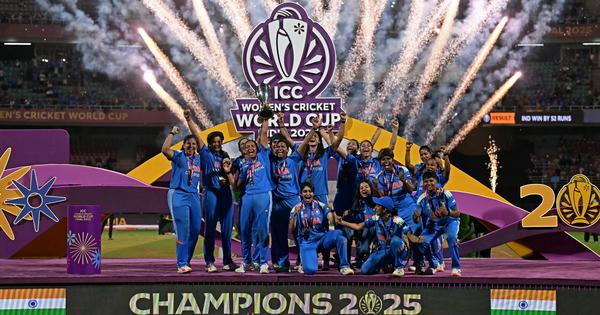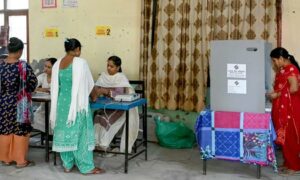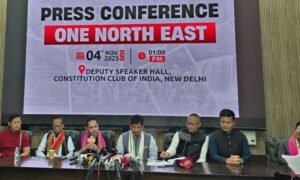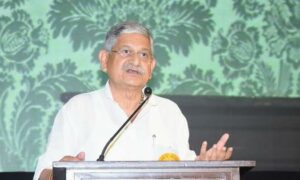
The newsroom is an unfair place. People are assigned beats – insider term for topics like civic affairs, politics, business, sports and entertainment – that get unequal attention. Eventually what gets covered and what makes it to the front page or the prime time slot is meant to be at the editor’s discretion.
It’s their subjective, sometimes whimsical, judgment of what’s important or relevant or likely to resonate.
You have the glamour beats that hog space (say national politics or the men’s cricket team) and the boring beats that get neglected (like public sector units and the women’s cricket team). On a slow news day, the boring beats get minor charitable attention.
This piece is a tribute to the many journalists who have covered women’s cricket in India when it was not automatically destined for the front page. Those silent newsroom entrepreneurs who found a market when nobody else saw it.
When the women played in empty grounds, these journalists sat in empty press boxes. They bootstrapped what they believe in by carrying notebooks, cameras and a stubborn belief that women’s cricket mattered. They barely received seed funding, but have moved from Series A to C, and are on the cusp of the biggest funding round.
This isn’t a complete list. It’s only the voices I’ve followed and loved. If there’s someone you think I’ve missed, tell me – and more importantly, tell them – what their work has meant to you.
Sidhanta Patnaik
Few loved women’s cricket more than Patnaik, and everyone who knew him wishes he was around today. In 2018, Sidhanta wrote The Fire Burns Blue, a book that documents the journey of women’s cricket in India, I hope there’s a conversation about bringing it back into circulation. His work, always meticulous, was admired in the journalism fraternity, and loved by cricketers. That Jemimah Rodrigues and Smriti Mandhana were the last two people to meet him before he lost his battle to cancer tells us what he meant to them, and they to him.
He was overjoyed to see us yesterday and it was a delight speaking with him!
He was a top journalist who was passionately following and writing about women’s cricket when not many were.
Thank you for all your amazing work and the legacy you’ve left behind Sir. Rest in Peace. https://t.co/teklD1rEPQ— Jemimah Rodrigues (@JemiRodrigues) June 1, 2019
Sharda Ugra
Here’s a cricket writer as elegant as Laxman, irreverent as Sehwag, and with the longevity of Tendulkar. Scratch that. As elegant as Smriti, irreverent as Shafali, and with the longevity of Mithali. Sharda Ugra brings both gravitas and credibility. By lending her voice to the women’s game she’s inspired a generation of journalists, and put the spotlight on the players and the administration.
She’s the rockstar sports journalism needs: every time she writes, even today, the most hard-to-please people are nodding and retweeting in wild agreement. Don’t bother looking her up on social media. She’s a little like Dravid.
Abhishek Mukherjee
Is it possible to be a statistician, historian, writer, editor, and translator? Abhishek Mukherjee sometimes feels like the Ellyse Perry of cricket coverage – there’s simply nothing he can’t do. And in every avatar his heart beats for women’s cricket. From reporting on it to reminding us how far we’ve come, he’s been at it for a long time. His book Caught Yapping offers the most beautiful insight into the early days of women’s cricket in India. When he tweets about women’s cricket, it’s all heart.
Karunya Keshav
Remarkably influential, Karunya Keshav is the co-writer of The Fire Burns Blue, and a fierce advocate for the women’s game. She has argued for pay parity, calling out the inequity in funding for women’s cricket. The success of the book led Siddhanta and her to work on a report, An Equal Hue, that made the case for a women’s IPL and professional contracts.
They also called out the lack of private changing rooms for girls, and explained how it was a barrier to taking up sport. Half a decade since its publishing, the impact of the report is visible to everyone who has read it.
Snehal Pradhan
She once wore the India blue (not the kind I bought for my kids), and then moved from being an international bowler to an allrounder in the second innings of her career. Snehal Pradhan was one of the writers of An Equal Hue, wrote news columns and dabbled in commentary, and is now working on the women’s game with the International Cricket Council.
For years Pradhan has explained the nuances of the game through her YouTube channel in English, Hindi and Marathi, producing coaching tutorials, and interviews of lesser-known coaches, such as Jemimah Rodrigues’ father.
Lavanya Lakshmi Narayanan
To see the rise in engagement on Lavanya Lakshmi Narayan’s social media posts is to see the rise in the profile of the women’s game. Over the last few years she has dutifully chronicled the women’s game, covering matches few would watch, but giving her work the same commitment and dedication the cricketers applied to their trade.
To then see her post this image before the final, and then write the lead story on the front page of The Hindu the next morning makes this as sweet a victory as any.
Attaching our early and late city edition coverage of the Women’s ODI World Cup final from @the_hindu
A proper @BCCIWomen takeover as they deserve! What a victory. Excited to see where the ecosystem goes from here in India and how India uses the champion’s star to make more of… pic.twitter.com/gRWtuFBnOc
— Lavanya 🎙️🎥👩🏻💻 (@lav_narayanan) November 3, 2025
Zenia D’Cunha
For the last few years Zenia D’Cunha has championed women’s representation and equality in Indian sport. Her writing is unfailingly evocative, and she’s constantly asking hard questions. Few have followed Jemimah Rodrigues’s career as closely as D’ Cunha. She interviewed Rodrigues for Scroll when she was a raw teenager, wearing her favourite Barcelona tee well before she got her hands on the India jersey.
One plug for D’Cunha: if you read only one article this week, look up the ESPN website for her deeply poignant essay, “The making of Jemimah Rodrigues.” It is literature.
Shashank Kishore
For a long, long time ESPNCricinfo has been the definitive cricket destination online. When they take women’s cricket seriously, their followers tend to, well, follow. Shashank Kishore’s exacting reporting on women’s cricket accords the often-missing equity in coverage. No gender pandering or cheerleading. Nor the lazy what-more-do-you-want-before-you-perform kind of critique either. Just good-old journalism, and easily switching from top-flight men’s cricket to women’s cricket – a little like the new breed of cricket lovers in India.
Annesha Ghosh
She’s the perfect all-format player, the kind the BCCI would give an A+ contract to. Annesha Ghosh is a consummate storyteller: she does long-form interviews, puts out incisive tweets, anchors on TV, and produces documentary-style videos. If that ICC montage after India’s semifinal victory against Australia didn’t move you, nothing will.
Like Lavanya Lakshmi Narayan and Zenia D’Cunha, she closely observed this generation of India’s women cricketers from close quarters, reported the mundane, and has now documented the most inspiring chapter in Indian women’s cricket history.
When India won at the stroke of midnight, I teared up, pulled up a phone to shoot a family moment at the ground, and then glanced at the press box. The storytellers must have been roaring.
Rahul Fernandes is a former cricket journalist, and has broken four bones playing cricket with a tennis ball. His X handle is @newspaperwallah.
📰 Crime Today News is proudly sponsored by DRYFRUIT & CO – A Brand by eFabby Global LLC
Design & Developed by Yes Mom Hosting






